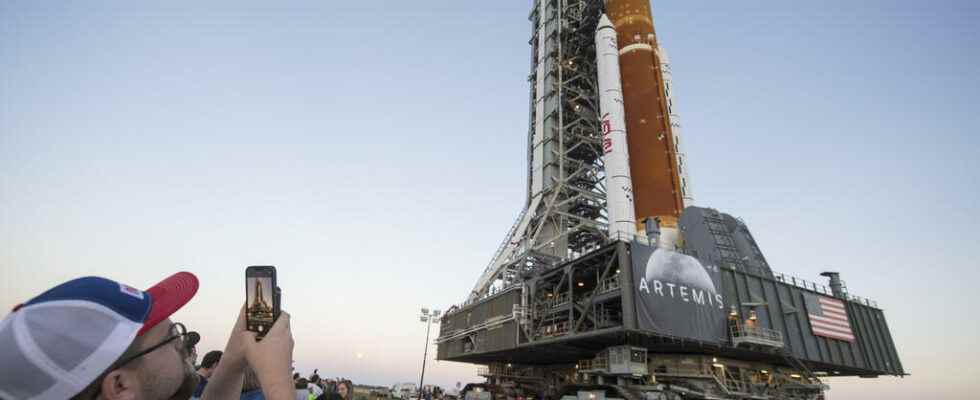It’s dress rehearsal time for Artemis, NASA’s giant rocket, ahead of its lunar mission scheduled for June at the earliest. This will be an unmanned flight. The goal is to achieve a moon landing by 2026, so a landing on the moon and a return of astronauts to its surface, 54 years after the Apollo 17 mission. For the moment, it is about carry out tests on the Cape Canaveral launch pad in Florida.
If the launcher and the spacecraft bear the logo of the American space agency NASA, the service module, the third piece of the building, bears that of the European Space Agency (ESA). A critical element since it is he who provides the elements necessary for the survival of the astronauts in their ship.
” We supply their air, their electrical energy, their propulsion, their water and their thermal regulation system. Without this service module, NASA is going nowhere. So it’s a big step for the European Space Agency to be involved in such a complex system for a program, with such visibility, such a strong political connotation vis-à-vis the Americans and NASA.” details Antoine Alouani, the chief engineer for the module’s propulsion.
Two continents for a strategy
In its original plan, Artemis was supposed to be 100% American, but for political and financial reasons, NASA changed its mind. On the financial side, the ESA offers a free service module in exchange for places for its astronauts in the International Space Station or in this lunar adventure.
As for the political reasons, Antoine Alouani explains them: “ If NASA has operational difficulties keeping up with its schedules, keeping up with its costs, it can also say to the American Congress: don’t cancel the program, because if you cancel it, that has consequences for our partners in Europe or elsewhere in the world. A crucial strategy when you remember that the date of the first flight slipped from 2017 to 2022.
►Read also : Why haven’t we returned to the moon since 1972?
